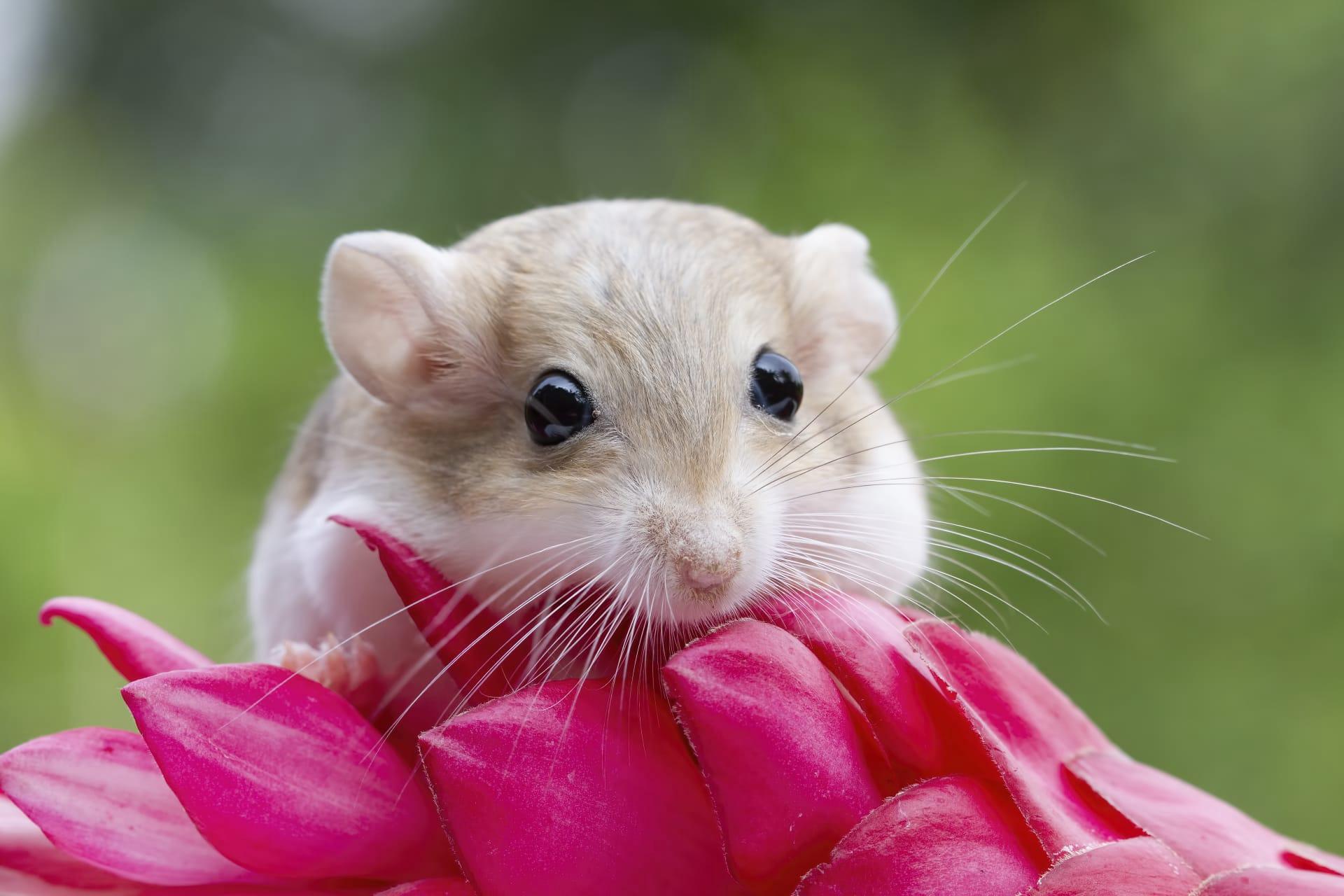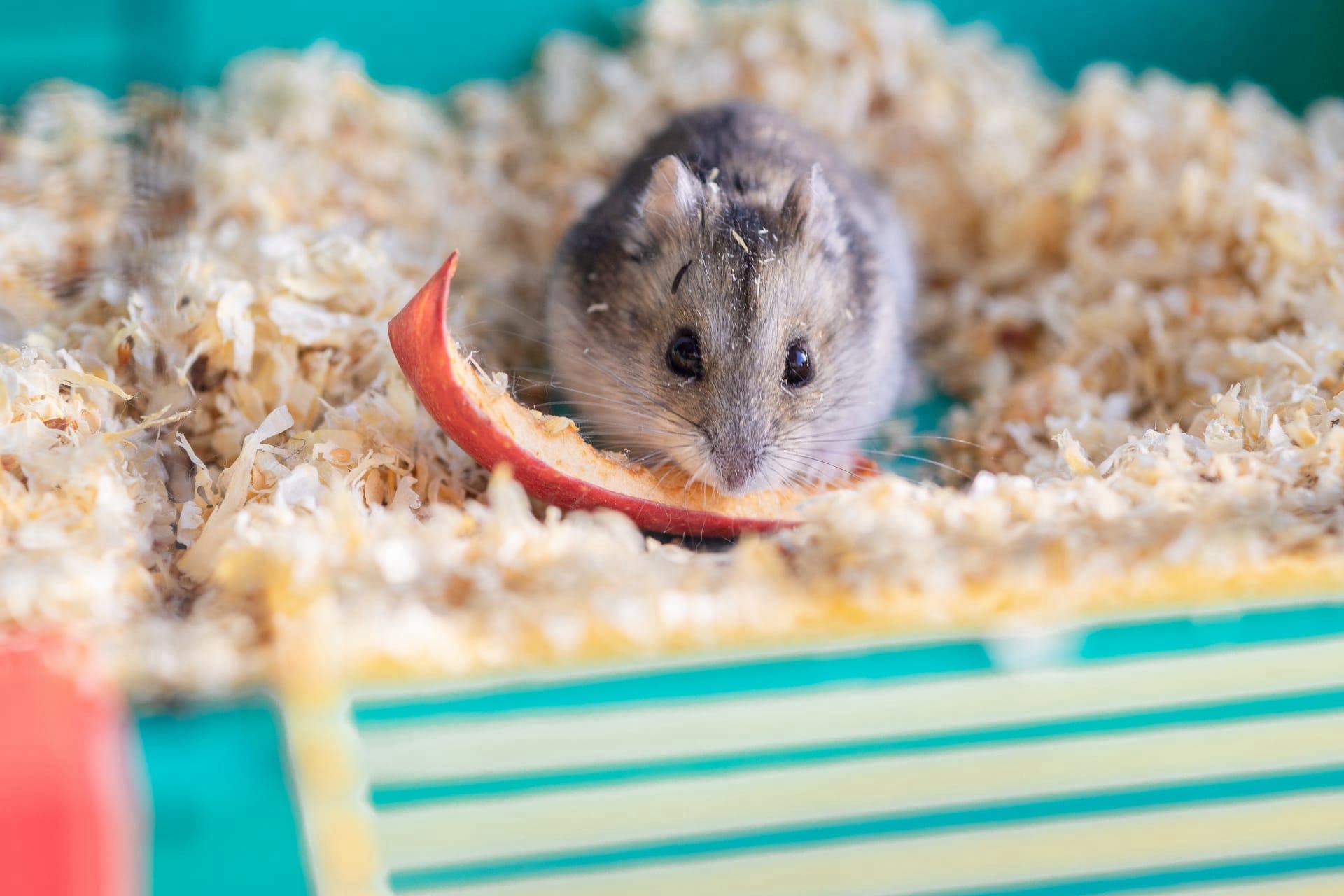Hamster
- Home /
- Mini Encyclopedia /
- Animal /
- Hamster
1
Hamsters are small rodents belonging to the subfamily Cricetinae, which contains 19 species classified in seven genera. They have become established as popular small house pets, but in the wild, hamster species are spread across various environments, from Europe to Syria and China. These tiny creatures are characterized by their stout bodies, short tails, and large cheek pouches, which they use to carry food and bedding to their burrows. The most commonly known species include the Syrian hamster, also known as the golden hamster, and dwarf hamsters such as the Campbell's dwarf hamster, the Winter White Russian dwarf hamster, and the Roborovski hamster.
Hamsters are native to a wide range of habitats, including steppes, sand dunes, and the edges of deserts. For example, the Syrian hamster originates from arid areas of northern Syria and southern Turkey, living in deep burrows which they dig to escape the hot environment. Dwarf hamsters, like the Roborovski, are typically found in desert regions of Central Asia, surviving in areas with sparse vegetation. The diversity in their habitats has led to these creatures developing unique adaptations to survive in different environmental conditions, ranging from cold Siberian winters to hot Middle Eastern summers.

2
Question: Do hamsters enjoy living in groups or being social with others of their kind?
Answer: Contrary to popular belief, most hamster species are solitary and territorial. Especially the Syrian hamster, which is often kept as a pet, prefers to live alone. If housed together, Syrian hamsters can become aggressive and may harm each other. Dwarf hamsters, like the Roborovski or Campbell's, can sometimes live in pairs or small groups if introduced at a young age, but even they can show aggression as they mature. It's essential for hamster owners to understand this solitary nature to provide the best care for their pets and avoid unnecessary stress or injury.

3
Hamsters are known for their unique survival strategies. One key feature is their ability to store food in their expansive cheek pouches, which extend to their shoulders. This allows them to transport food back to their burrows, ensuring a supply during scarce times. Hamsters are also nocturnal, meaning they are active during the night. This behavior helps them avoid predators and extreme daytime temperatures, especially in desert environments. Additionally, during winter, some species, like the Syrian hamster, can enter a state of torpor, a form of light hibernation where their body temperature drops and metabolic rate slows down, conserving energy until conditions improve.
Another remarkable strategy is their rapid reproduction rate. Hamsters can breed throughout the year, with females capable of giving birth to multiple litters annually, each containing up to 15 young. This high reproductive rate is a common strategy among small rodents to ensure species survival despite high predation risks and environmental challenges.

4
Hamsters play a significant role in their ecosystems. As prey animals, they are a crucial food source for many predators, including birds of prey, snakes, and larger mammals. This predatory relationship helps maintain the balance in the food chain, controlling the hamster population while supporting the survival of their predators.
Furthermore, hamsters contribute to soil aeration and seed dispersion through their burrowing and foraging activities. Their burrows can be quite complex, providing shelter not only for themselves but also for other small animals. By foraging for seeds and other plant materials, they aid in seed dispersal, which is vital for plant diversity and ecosystem health. Their activities indirectly support a range of other species, contributing to the overall biodiversity of their habitats.

5
Film: "Hamsters: Secrets of Their Nightly Lives" is a British documentary released in 2013. This film offers an insightful look into the nocturnal activities of hamsters, revealing their behaviors in both natural habitats and domestic settings. Using innovative filming techniques, it captures the intriguing night-time escapades and social interactions of these small, often misunderstood creatures.
Book: "The Hamster Handbook" by Patricia Bartlett, published in the United States in 2003, provides comprehensive care instructions for hamster owners. Covering various species, it includes advice on feeding, housing, health care, and understanding hamster behaviors, making it an invaluable resource for both new and experienced hamster enthusiasts.
Book: "Hamsters: A Complete Pet Owner's Manual" by Peter Fritzsche, released in Germany in 1999, is translated into several languages, including English. This book offers detailed information on hamster care, breeding, and the different species available. It's particularly noted for its practical advice and easy-to-understand approach, making it ideal for families and individuals considering a hamster as a pet.